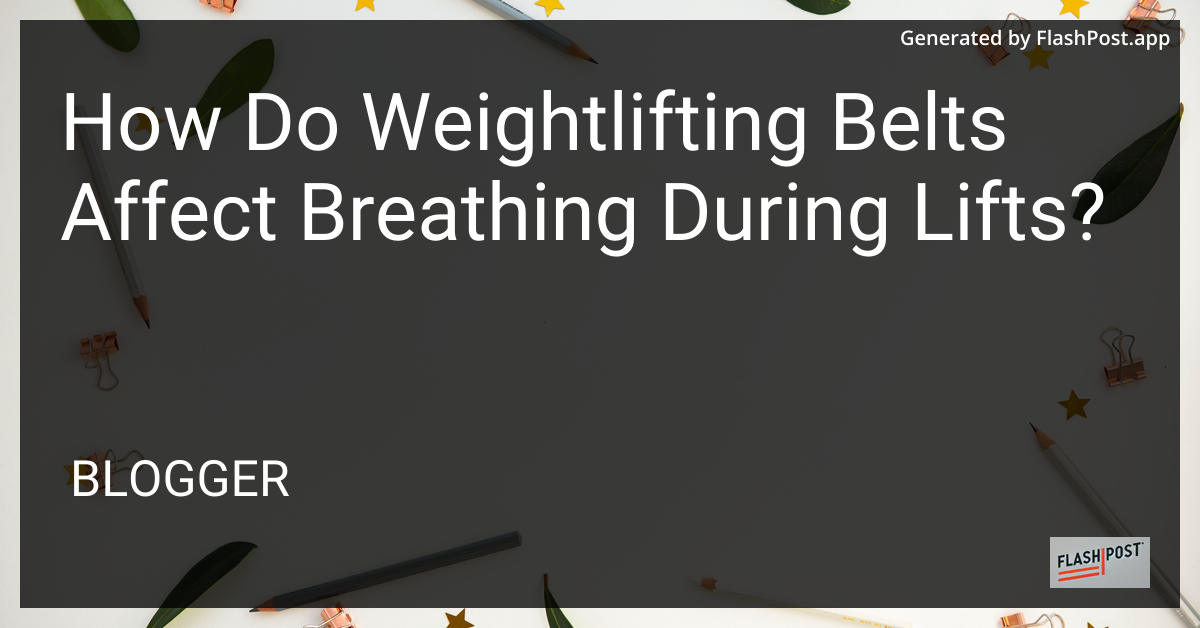How Do Weightlifting Belts Affect Breathing During Lifts?

How Do Weightlifting Belts Affect Breathing During Lifts?
When hitting the gym, especially during heavy lifting sessions, the use of weightlifting belts has become increasingly popular. These belts serve as a crucial accessory for many weightlifters, yet there is one critical area of concern among fitness enthusiasts: how do weightlifting belts affect breathing during lifts? Understanding the relationship between these belts and your breathing can help you use them effectively and safely during your workout routines.
The Role of Weightlifting Belts
Weightlifting belts are designed primarily to support the lower back during heavy lifts, such as deadlifts and squats. By increasing intra-abdominal pressure, these belts offer greater core stability, which can reduce the risk of back injuries. The increased pressure within the abdominal cavity acts as a counterbalance to the pressure exerted by heavy weights, providing a more stable base for lifting.
How Belts Affect Breathing
Increased Intra-Abdominal Pressure: Wearing a weightlifting belt tightly compresses the abdomen, increasing intra-abdominal pressure. This increase offers additional support for the spine but may restrict diaphragm movement slightly, affecting normal breathing patterns.
Diaphragmatic Breathing: For effective usage, lifters should practice diaphragmatic breathing when wearing a belt. This method involves deep inhalation into the lower lungs, pressing the diaphragm downward to create abdominal pressure, rather than the upper chest. It helps in maintaining stability and mitigates the belt’s restrictive impact.
Breath Control: Proper breath control is vital. Lifters often use a technique called the Valsalva maneuver—holding their breath during the most strenuous part of the lift to maintain high intra-abdominal pressure and stability. This can lead to a temporary rise in blood pressure, so mastering timing and duration is key.
Advantages and Precautions
While weightlifting belts offer significant advantages in terms of support and injury prevention, understanding their impact on breathing is crucial. Relying too heavily on a belt without proper breath control or over-tightening it can lead to dizziness or breathlessness. It’s essential to balance the belt’s tightness and to practice breathing techniques that compensate for any restrictions.
Conclusion
Weightlifting belts, when used correctly, can enhance performance and safety during heavy lifts. However, users must be aware of their effects on breathing and incorporate trained techniques like diaphragmatic breathing and effective breath control to maximize benefits while mitigating any potential disadvantages. As always, practice and gradual adaptation are key to harnessing the full potential of this indispensable gym accessory.
For further reading, you might find these articles interesting: Top Ankle Weights 2023, Weights Initialization Methods TensorFlow, and Sustainable Neoprene Weights.
Comments
Post a Comment